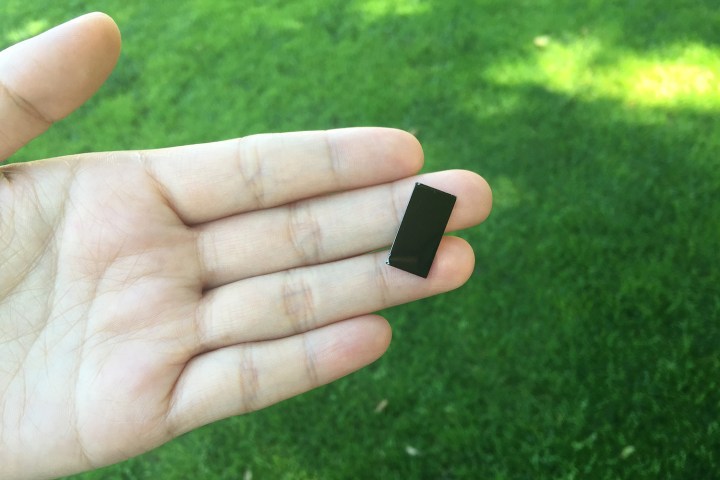
A tiny new device may help change that. Developed by researchers at the Department of Energy’s SLAC National Accelerator at Stanford University, the device is about half the size of a postage stamp and uses solar energy to disinfect water with bacterial contamination. The researchers reported their experiments in a paper this week in the journal Nature Nanotechnology.
People often use one of two methods to disinfect germ-ridden water in regions that lack a pure source: boiling or placing plastic water bottles in direct sunlight so the ultraviolet rays can kill microbes. The problem is, boiling uses fuel and the UV method may take up to 48 hours without even fully disinfecting the water.
In an effort to find a more effective and energy-efficient technique, Stanford researcher Yi Cui and his team developed the nanostructure device, made up of fingerprint-like arrangements of copper and a photocatalytic chemical called molybdenum disulfide. When struck by light, the walled structures release hydrogen peroxide and other bactericidal chemicals, which destroy the harmful bacteria and quickly dissolve.

“Our device looks like a little rectangle of black glass,” lead author and PhD researcher Chong Liu said in a press release. “We just dropped it into the water and put everything under the sun, and the sun did all the work.”
Although their experiments killed 99.999 percent of bacteria in 20 minutes, Cui admits that the device need further research and development. For one thing, the trials only tested the device on small amounts of water and three strains of bacteria. In other words, the experiments lacked the complex mixture of contaminants often found in the real world.
However, Cui remains optimistic: “It’s very exciting to see that by just designing a material you can achieve a good performance. It really works.”


